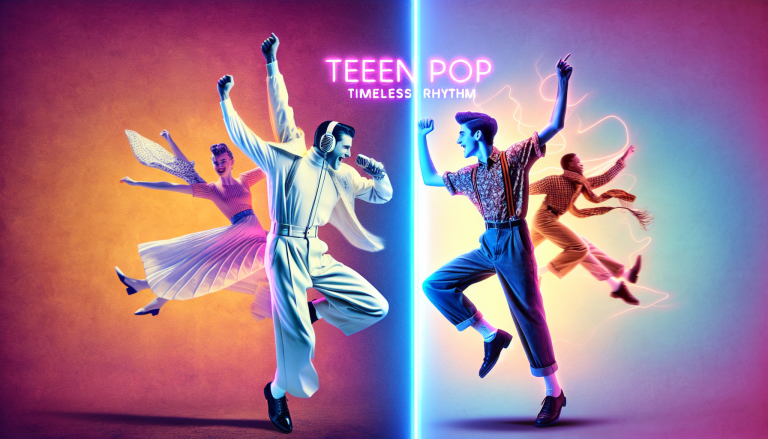The Electrifying Evolution of Teen Pop: A Musical Journey
Teen pop isn’t just a genre – it’s a cultural phenomenon that has shaped the landscape of American music for decades. From sugary sweet ballads to infectious dance tracks, teen pop represents more than just music; it’s a mirror reflecting the hopes, dreams, and emotions of an entire generation.
Historical Roots: Where It All Began
The origins of teen pop can be traced back to the 1950s and 1960s, when artists like Elvis Presley and The Beatles first captured the hearts of young audiences. However, the genre truly exploded in the late 1980s and 1990s, becoming a powerful force in the music industry. Teenage audiences suddenly had their own musical identity – a sound that was distinctly theirs, vibrant and unapologetically energetic.
The late 1990s marked a golden era for teen pop, with boy bands and girl groups dominating the charts. Groups like *NSYNC, Backstreet Boys, and Spice Girls weren’t just musical acts; they were global cultural phenomena that transcended traditional music boundaries. They created a template for pop stardom that would influence generations of musicians to come.

Genre Description: More Than Just Catchy Tunes
Teen pop is characterized by its upbeat rhythms, catchy melodies, and lyrics that speak directly to young audiences. It’s a genre that masterfully blends elements of pop, dance, and R&B, creating a sound that is simultaneously accessible and exciting. The music often explores themes of love, friendship, self-discovery, and the rollercoaster of teenage emotions.
What sets teen pop apart is its ability to create an immersive experience. It’s not just about the music – it’s about creating a complete artistic package. Elaborate music videos, synchronized dance routines, and carefully crafted image management became as important as the songs themselves.
Key Artists: The Icons Who Defined a Generation
Several artists stand out as true teen pop pioneers. Britney Spears, often referred to as the “Princess of Pop,” revolutionized the genre with her debut single “…Baby One More Time” in 1998. Her combination of provocative imagery, infectious music, and undeniable talent set a new standard for pop stardom.
Justin Timberlake, first with *NSYNC and then as a solo artist, demonstrated the genre’s potential for artistic growth. He successfully transitioned from teen pop heartthrob to a respected musical innovator, blending pop with R&B and soul.
Christina Aguilera represented another dimension of teen pop, showcasing incredible vocal range and a willingness to push genre boundaries. Her album “Stripped” challenged the conventional teen pop narrative, incorporating more mature themes and diverse musical styles.
Notable Albums: Defining Musical Moments
Several albums stand as landmark releases in teen pop history. The Backstreet Boys’ “Millennium” (1999) sold over 24 million copies worldwide, becoming a global phenomenon. Britney Spears’ “…Baby One More Time” album introduced a new archetype of pop stardom.
Christina Aguilera’s “Stripped” (2002) was particularly groundbreaking, blending pop, R&B, and soul while addressing complex themes of empowerment and personal identity. The album challenged the lightweight perception of teen pop, proving the genre could be both commercially successful and artistically meaningful.
Lasting Effects: A Continuing Musical Legacy
Teen pop’s influence extends far beyond its peak years. Modern pop stars like Ariana Grande, Taylor Swift, and Dua Lipa have roots in the teen pop tradition, demonstrating the genre’s enduring impact. The DNA of teen pop can be found in contemporary R&B/Pop Fusion, showing how musical genres continuously evolve and transform.
The genre also paved the way for more diverse representation in pop music. Artists like Ricky Martin and Jennifer Lopez introduced Latin pop elements, while groups like Destiny’s Child highlighted African American artists in mainstream pop.
“Music is a powerful tool for understanding generational experiences,” says music critic Nelson Rodriguez. “Teen pop isn’t just about catchy songs – it’s a cultural narrative that captures the spirit of its time.”
Cultural Significance: More Than Just Music
Teen pop reflects broader social changes. It challenged traditional music industry structures, demonstrated the economic power of young audiences, and created new models of celebrity and artistic expression. The genre showed that music could be simultaneously commercial and meaningful.
Moreover, teen pop played a crucial role in the digital transformation of the music industry. As MTV and music video channels gained prominence, teen pop artists became multimedia performers, understanding the power of visual storytelling alongside musical performance.
From its humble beginnings to its current incarnations, teen pop remains a vibrant, dynamic genre that continues to evolve. It represents more than just a musical style – it’s a reflection of youth culture, dreams, and the ever-changing landscape of American music.